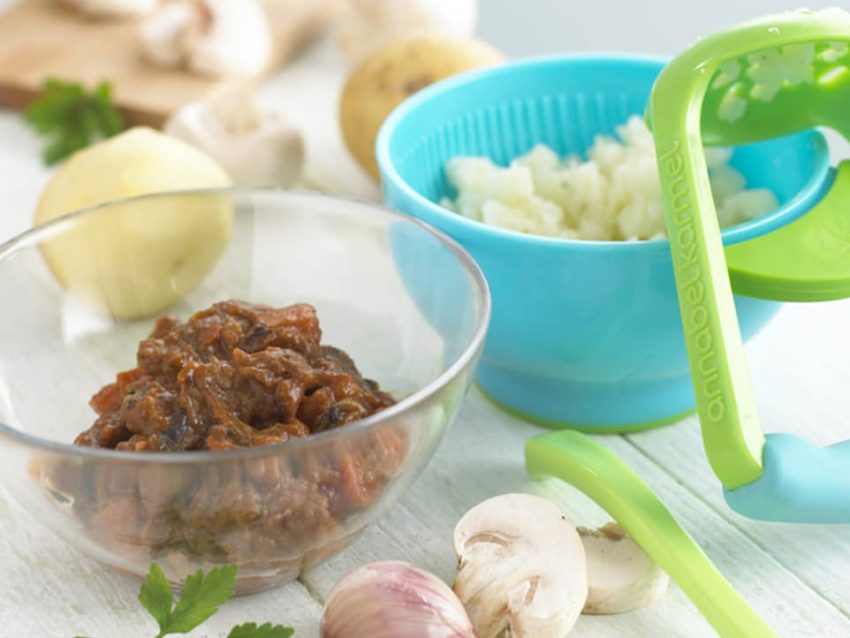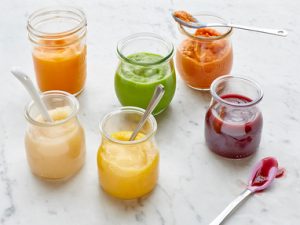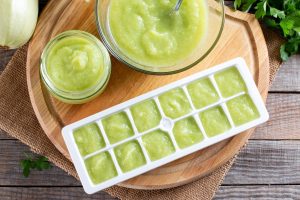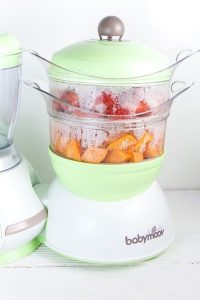Introducing your baby to solid foods is an exciting milestone. Vegetable puree ideas for babies are a great first food because they’re easy to digest and packed with nutrients. But with so many vegetables to choose from, it can be hard to know where to start.
This article offers a variety of delicious and nutritious vegetable puree ideas to tempt your baby’s taste buds.
Single Veggie Purees: Starting Simple
When starting your baby on solid foods, single-vegetable purees are a good way to introduce new flavors and identify any potential allergies. Here are some ideas for delicious and nutritious single-vegetable purees:
Sweet Potato:
Steam or roast sweet potatoes until tender. Puree in a blender or food processor until smooth. Sweet potato is naturally sweet and a good source of vitamins A and C.
Avocado:
Scoop the flesh from a ripe avocado and mash it with a fork until smooth. Avocado is a healthy fat source and rich in vitamins E and K.
Butternut Squash:
Steam or roast butternut squash until tender. Puree in a blender or food processor until smooth. Butternut squash is naturally sweet and a good source of vitamin A.
Peas:
Steam fresh or frozen peas until tender. Puree in a blender or food processor until smooth. Peas are a good source of protein and fiber.
Tips for Perfect Purees
- Ripeness is Key: Use ripe vegetables for the best flavor and texture.
- Steaming or Roasting: Steaming or roasting vegetables helps preserve nutrients.
- Water or Breastmilk: You can add a little water or breastmilk to thin the puree to your desired consistency.
Flavorful Fusion Purees: Mixing and Matching
Once your baby is comfortable with single-vegetable purees, you can start to explore flavor combinations. Here are some ideas for delicious and nutritious fusion purees:
- Sweet Potato and Carrot: This classic combination is naturally sweet and a good source of vitamins A and C.
- Avocado and Banana: This creamy puree is a great source of healthy fats and potassium.
- Broccoli and Peas: This nutrient-packed puree provides vitamins A, C, and K.
- Butternut Squash and Apple: This sweet and slightly tart puree is a delicious way to introduce apples.
Adding Herbs and Spices (Optional)
As your baby gets older, you can start to introduce herbs and spices to their purees. Start with a pinch and gradually increase the amount as your baby gets used to the new flavors. Here are some safe and delicious options:
- Dill
- Parsley
- Cinnamon
Beyond the Puree: Variety is Key
As your baby’s appetite and skills develop, you can move beyond smooth purees. Here are some ways to offer variety:
- Chunkier Purees: Leave some small lumps in the puree as your baby gets used to different textures.
- Mashed Vegetables: Mash cooked vegetables with a fork for a thicker consistency.
- Finger Foods: Offer soft, cooked vegetables like steamed broccoli florets or ripe avocado slices for your baby to self-feed.
Safety First!
- Always supervise your baby while they eat.
- Watch for signs of allergies, such as rash, hives, or vomiting.
- Introduce new foods one at a time.
- Wait at least a few days before introducing a new food after your baby tries a new vegetable.
Vegetable purees are a delicious and nutritious way to introduce your baby to solid foods. With a little creativity, you can create endless flavor combinations to keep your baby happy and healthy. Remember to start simple, introduce new flavors gradually, and always prioritize safety. Enjoy this exciting time as your baby explores the wonderful world of taste!

The Power of Play: Mealtime Fun with Purees
Mealtime can be a fun and interactive experience for you and your baby. Here are some ideas to incorporate play and exploration during puree feeding:
- Make silly faces: Pull funny faces while feeding your baby to keep them engaged and entertained.
- Let them touch it: Once your baby is past the pure puree stage, allow them to touch and explore the texture of mashed or chunky vegetables with their fingers.
- Sing songs and rhymes: Singing songs and rhymes can make mealtime more enjoyable and help your baby associate eating with positive experiences.
Building Independence: Self-Feeding with Finger Foods
As your baby develops their pincer grasp and hand-eye coordination, they’ll naturally show interest in self-feeding. Here are some tips for introducing finger foods safely:
- Choose appropriate textures: Start with soft, cooked vegetables that are easy for your baby to gum and swallow, such as steamed broccoli florets or ripe avocado slices.
- Cut into safe shapes: Cut finger foods into small, elongated shapes that your baby can easily grasp.
- Supervise closely: Always supervise your baby during self-feeding to prevent choking.
Going Global: Exploring New Flavors
As your baby becomes accustomed to basic vegetable purees, you can introduce exciting new flavors from around the world! Here are some ideas for global-inspired purees:
- Sweet Potato, Mango, and Coconut (tropical): This vibrant puree combines the sweetness of sweet potato and mango with a hint of coconut cream for a taste of the tropics.
- Beet, Apple, and Cinnamon (European): Earthy beets are balanced by the sweetness of apple and a touch of cinnamon in this European-inspired puree.
- Butternut Squash, Black Beans, and Cumin (Latin American): This creamy puree blends butternut squash with black beans and a touch of cumin for a taste of Latin America.
Adding Complexity (Optional)
Once your baby is familiar with single flavors and basic combinations, you can introduce more complex flavor profiles. Here are some tips:
- Roast Vegetables: Roasting vegetables intensifies their sweetness and adds depth of flavor.
- Fresh Herbs: Fresh herbs like chives, basil, or parsley can add a delightful touch to purees.
- Cheese (for 8+ months): For babies 8 months and older, a sprinkle of grated cheese can add a savory element to purees.
Important Note: Always check with your pediatrician before introducing new foods to babies under 8 months old.
Conclusion
Vegetable purees are a nutritious and delicious way to introduce your baby to a world of flavors. By offering a variety of textures and encouraging exploration during mealtime, you can help your baby develop a healthy relationship with food. Remember, the most important thing is to create a positive and enjoyable mealtime experience for both you and your little one.




